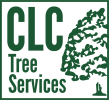
It is now official. As of Wednesday July 13th, the City of London declared a tree watering alert. According to yesterday’s article in the London Free Press, London has had only 4.7 mm of rain so far in July. Compare that to our wet spring where we saw 127 mm of rain in May (average is 83 mm) and you can see the stark difference. Lawns everywhere are becoming brown and dry. Foliage is looking limp and lifeless. The Forest city’s trees are thirsty.
While the crispy, brown swatches of lawns in London are not a pretty sight to behold, they are not dangerous to the grass. Grass goes dormant under drought conditions. A little rain and they spring back to life. Trees, on the other hand, are not so lucky. Trees continue to grow, despite stressful situations like drought. If they do not receive adequate water and nutrients, they become vulnerable to insect invasions and disease. If droughts go on long enough, trees become less resilient and may even die.
So what can you do about it? Aside from a drought relief fertilizer, that allows tree roots to more effectively absorb what available moisture is there, you need to water. Forget the lawn, and pull out your hose for the trees in your yard. Trees require a minimum of 2.5 cm of water a week, depending upon the size of your tree. Larger trees may require more water. While a rain gauge can help you to know how much Mother Nature is helping in the watering department, when we have had no rain, it is your job to keep your trees alive.
For those that aren’t sure what 2.5 cm looks like, unless it is in your rain gauge, here are some suggestions for watering an average size tree;
- 30 minutes of watering with a sprinkler first thing in the morning or later in the evening
- applying a garden hose on a slow drip for the day
- placing a five gallon pail with a small hole in it near the base of the tree to slowly trickle feed the tree
Watering your trees with a slow drip system helps the tree to absorb the water more effectively and minimizes loss due to evaporation. This should be repeated as necessary, approximately every three days to once a week, depending upon precipitation. Also, don’t forget to adhere to the watering bylaws that are in effect in London during summer months; even house numbers can water on even calendar days and odd house numbers can water on odd calendar days.
If you aren’t sure if you should water or not, look at the soil around the base of your tree. If it feels moist to the touch, then the tree should be fine. If the soil is dry and cracked, then your tree is thirsty and requires water. During periods of high heat and little precipitation, there is a pretty good chance that you need to water.
Trees give us so much to be thankful for. With their aesthetic beauty, ample canopies that offer us shade from the heat of the day, not to mention that little thing called oxygen that they put out, we should be more than willing to offer them a little drink during periods of high stress for them. Healthier, more resilient trees will be your reward and the Forest City thanks you for your efforts as well.
So if you haven’t watered your trees yet this week, what’s stopping you? It only costs a handful of change to keep them alive. Go grab your hose right now and give the Forest City’s precious resources a drink. They are thirsty. The trees need our help. I am going to go water mine right now.




[…] TIME FOR A DRINK: The Forest City’s Trees are Thirsty (clctreeservices.com) Rate this:Share this:FacebookTwitterPinterestStumbleUponMoreTumblrEmailPrintLinkedInDiggRedditLike this:LikeBe the first to like this. […]